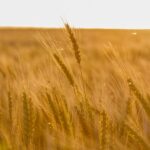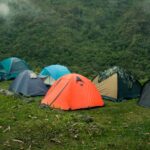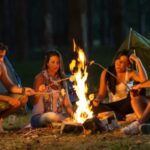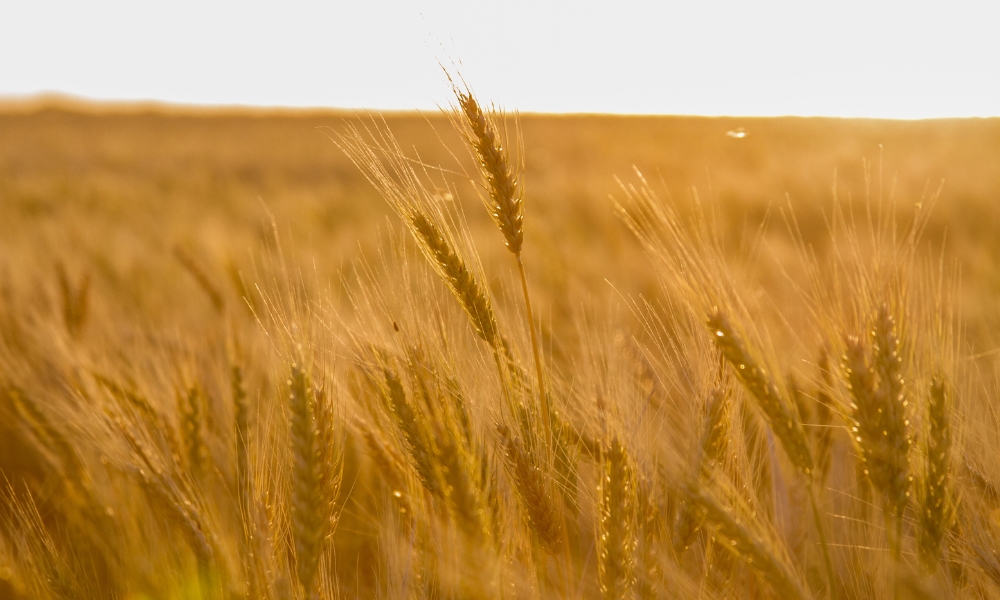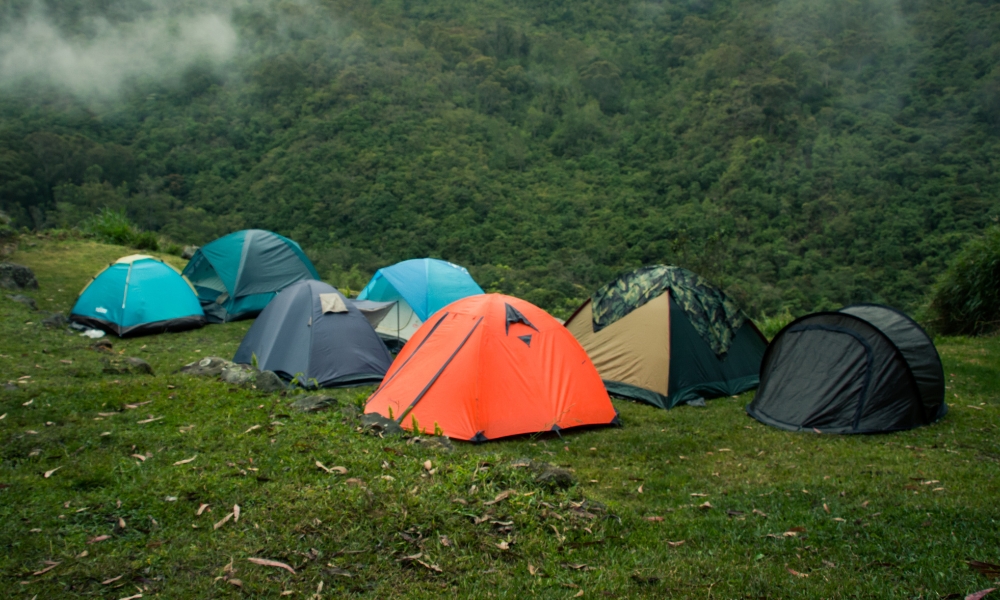Camping in the mountains is one of the most exciting experiences for nature lovers. The fresh air, breathtaking landscapes, and tranquility offer a complete escape from the urban pace of life. However, to fully enjoy the adventure, it’s essential to be well-prepared. In the mountains, the weather changes unpredictably, resources are limited, and safety depends largely on the equipment you bring. In this article, you’ll find a comprehensive guide on what to pack for a mountain camping trip , from basic clothing and gear to food and accessories that will make your experience safer and more enjoyable.
🏕️1. Basic camping equipment
The right equipment is the foundation of any successful camping trip. It’s not about carrying a lot of weight, but about carrying the essentials, well-chosen and of good quality.
Durable Tent: Choose a tent suitable for the terrain and season. In the mountains, temperatures can drop drastically, so a three- or four-season tent with good waterproofing (minimum 2000 mm water column) and wind resistance is recommended. Be sure to also bring spare tent pegs and guy lines .
Thermal sleeping bag: A sleeping bag should protect you from the cold at night. For mountaineering, look for one with a comfort temperature rating between -5°C and 0°C . Down sleeping bags are lighter and warmer, but synthetic ones are more resistant to moisture.
Sleeping mat or insulating mattress: Sleeping directly on the floor can be very uncomfortable and cold. A good sleeping mat or inflatable mattress helps retain body heat and improves sleep.
Hiking Backpack: The backpack should have a capacity of between 50 and 70 liters and a good lumbar support system. Distribute the weight properly: the heaviest items closest to your back and centered. Also include a waterproof cover in case of rain.
🧥2. Appropriate clothing for mountain camping
Mountain weather can vary greatly between day and night. Therefore, it’s essential to dress in layers to easily adapt to temperature changes.
First layer (thermal underwear) : This layer retains body heat and wicks away sweat. It should be lightweight, breathable, and close-fitting. Avoid cotton, as it traps moisture.
Second layer (thermal insulation) : This can be a fleece or synthetic wool jacket . This layer traps heat and keeps you warm even when the temperature drops.
Third layer (waterproof and windproof)
A waterproof and breathable jacket (like Gore-Tex or similar) is essential. It will protect you from rain, wind, and snow.
Wear durable, breathable, and quick-drying hiking pants . If extreme cold is forecast, opt for models with thermal insulation or a removable lining.
Hiking Footwear: Wear hiking boots with non-slip soles , water resistance, and good ankle support. Pair them with thermal socks to prevent chafing and keep your feet dry.
Additional accessories
- Hat or balaclava to protect the head from the cold.
- Thermal and waterproof gloves .
- Sunglasses and sunscreen , even in winter, as the sun is stronger at higher altitudes.
🍲3. Food and drinks for camping
Good nutrition is key to maintaining energy during hikes and mountain activities . Opt for light, energizing, and easy-to-prepare foods.
Main meal
- Dehydrated or canned dishes (pasta, rice, soups, legumes).
- Cereals, oats and energy bars for breakfast or on the go.
- Nuts, chocolate and dried fruit as snacks.
Drinks: Water is essential. Allow at least 2 liters per person per day , although it’s recommended to carry more in the mountains. If there are natural springs, bring water purification tablets or a portable filter .
Camp kitchen
- Portable stove and gas or fuel cartridges .
- Waterproof lighter and matches .
- Basic utensils: light pot, metal cup, multipurpose knife, ladle or spatula.
- Reusable trash bag to keep the environment clean.
🔦4. Essential tools and accessories
These elements may seem secondary, but in unforeseen situations they make a big difference.
Headlamp or rechargeable lamp: Nights in the mountains are completely dark. A headlamp leaves your hands free and allows you to move easily. Carry spare batteries or a portable solar charger .
Multipurpose knife . Useful for cutting rope, preparing food, or repairing equipment. An indispensable tool for any camping trip.
Hiking poles help maintain balance and reduce the load on the knees, especially on steep ascents or descents.
Map and compass (or GPS): Although mobile apps are commonly used these days, never rely solely on your phone’s battery. Carry a physical map and a traditional compass .
Rope or paracord can be used to secure a tent, dry clothes, or improvise an emergency shelter.
A first-aid kit should include: bandages, gauze, disinfectant, pain relievers, adhesive bandages, antibiotic ointment, and any personal medications. Don’t forget to add insect repellent and sunscreen .
🌦️5. Climate and safety preparedness
The mountains are unpredictable: they can dawn sunny and, in a few hours, turn into a storm. Good planning prevents accidents.
- Check the weather forecast. Before heading out, check the weather and avoid camping on stormy or windy days.
- Inform someone of your route. Always tell a family member or friend your itinerary and the estimated duration of your camping trip. This is vital in case of emergency.
- Avoid dangerous areas. Do not pitch your tent near rivers, steep slopes, or large trees (risk of falling branches). Look for firm, gently sloping ground to avoid flooding.
- Emergency signals: Carry a whistle , a flashlight with SOS mode , or a satellite phone if you are going to areas without coverage.
🏔️6. Final tips for enjoying the experience
- Plan ahead: choose your route, check the weather, and prepare a checklist.
- Minimize weight: carry only what you need, but don’t sacrifice safety.
- Respect nature: do not leave trash and avoid damaging local flora or fauna.
- Stay hydrated and get plenty of rest: tiredness and dehydration are common causes of accidents.
- Enjoy the silence: take the opportunity to disconnect from your mobile phone, observe the starry sky and reconnect with yourself.
Conclusion
A mountain camping trip can be an unforgettable experience if you’re properly prepared. Having the right gear not only improves comfort but also ensures safety and well-being in natural environments where unexpected events can occur at any time. Remember: the key is the balance between weight, functionality, and safety . With this guide, you’ll know exactly what to pack and how to prepare to make the most of your next mountain adventure.
